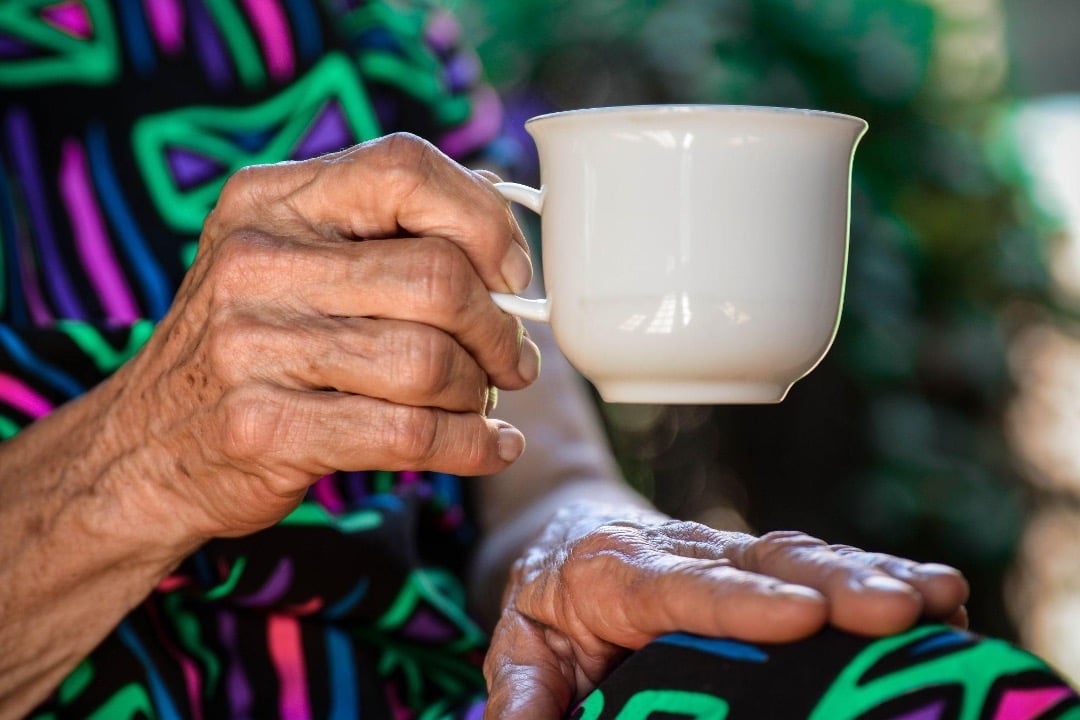Types of Tremors: Symptoms, Causes, and Treatments

Dealing with tremor can be quite debilitating. While tremors are not life-threatening, they can make doing daily life tasks difficult. Doing things like writing and typing becomes a struggle, rather than something that’s second nature to you.
Tremors can affect any person of any age, however, they are most common among middle-aged and older adults. Tremors are an involuntary shaking of your body, meaning you have no control over them.
Various health conditions can cause tremors, but fortunately there are treatments that can help to manage them. If you find yourself suffering from this involuntary shaking in one or more parts of your body, go to your doctor so they can conduct a proper tremor diagnosis evaluation.
In this blog post, we’ll be discussing the various types of tremors, tremors causes, tremors symptoms, and more. In order to properly treat your tremors, you have to identify the root cause. Read this blog post so you can have a better understanding of your tremors.
What is a Tremor?
First off- what are tremors? A tremor is an involuntary and rhythmic muscle contraction that causes shaking in one or multiple body parts. Tremors are most common in the hands, but they can also affect the arms, head, legs, torso, and even voice.
Tremors can be intermittent, meaning they come and go, or they can be constant. Tremors can also happen on their own or as a result of another health condition.
Essential tremor is one of the most common movement disorders, affecting approximately 7 million people in the United States. While a tremor in itself is not usually dangerous, it’s often a result of a more serious health condition, which is why it’s crucial to see your doctor if you’re experiencing tremors. Tremors can also be embarrassing and disabling if they begin to affect your daily life tasks.
Next, we’ll discuss what causes tremors and the various types of tremors, so that you can have a better idea of exactly what’s causing yours.
What causes tremor?
In most cases, a tremor is a result of a problem in the part of the brain that controls movement. Various conditions can cause tremors, but in many cases the root cause is unknown. Tremors can also be genetic.
Some of the potential causes of tremors include:
- Neurological disorders, such as Parkinson’s disease, multiple sclerosis, or a stroke
- Mercury poisoning
- Alcohol use disorder
- Hyperthyroidism
- Liver or kidney failure
- Anxiety or panic attacks
- Certain medications, such as asthma medication, caffeine, corticosteroids, or amphetamines
- Stress
- Aging
- Low blood sugar levels
What are the symptoms of tremor?
Tremors symptoms differ depending on the individual and what type of tremor they have. In most cases, tremor symptoms will look something like:
- Involuntary, rhythmic shaking in the hands, legs, arms, head, or torso
- Shaky voice
- Difficulty with simple life tasks, like writing, drawing, or holding utensils
These symptoms can range from mild to severe, but high levels of stress typically aggravate them. Certain postures or body movements can also make these symptoms worse.

Types of Tremors
There are many different types of tremors, and the causes and treatments differ for each. But in order to treat your tremor, it’s important to identify the underlying issue. Understanding the different types of tremors can help you move forward with your life and find the proper course of treatment.
There are two different types of tremor classifications: resting tremor and action tremor. We’ll get into the difference below.
Resting
A resting tremor happens when the muscles are relaxed. For example, with resting tremor, you could be sitting down with your hands on your lap, when all of a sudden your hands begin to shake. Typically, resting tremors only impact the hands or fingers and will go away once the hands start to move around.
The most common cause of resting tremor is Parkinson’s disease. Resting tremor is also often called a “pill-rolling” tremor. This is because the circular movement of the finger and hand resembles something similar to rolling pills in the hand.
Action
An action tremor happens only with the voluntary movement of a muscle. Action tremors are the most common types of tremors, and they can be divided into several subcategories, including:
- Postural tremor: Occurs when a person holds a position against gravity, like with their arms or legs outstretched.
- Intention tremor: Occurs during a specific target movement, like when you touch your finger to your nose.
- Kinetic tremor: Occurs during any voluntary movement, like if you move your wrist up and down.
- Isometric tremor: Occurs during a muscle contraction that is not caused by any movement, like if you hold a dumbbell in the same position without moving it.
- Task-specific tremor: Occurs during a specific goal-oriented task, like writing.

Categories of Tremor
Beyond resting and action tremor, types of tremor can also be categorized into the following based on their appearance and cause:
Essential tremor
Essential tremor is a very common movement disorder. The exact cause of essential tremor is unknown.
Essential tremors are typically classified as postural or action tremors. Essential tremor will start on one side of the body and then progress to both sides. Essential tremors can be mild and remain stable, or they can progress over time. Movement will usually worsen the shaking.
Someone who is suffering from essential tremor will mostly experience this involuntary shaking in their hands. Essential tremors can also affect a person’s head movements. The shaking from essential tremor is often most common while performing simple tasks, like tying shoelaces or drinking from a glass.
In most cases, essential tremor is genetic and it mostly affects individuals over the age of 40. Symptoms can be aggravated by emotional stress, fatigue, or caffeine. Essential tremor treatments include the following approaches:
- Non-surgical therapy, such as Cala Trio’s novel ET wearable
- Lifestyle changes, including, avoiding stress and tremor triggers and adopting relaxation techniques.
- Medication, including, Botox injections
- Physical therapy and assistive devices
- Invasive procedures (i.e. surgical Deep Brain Stimulation, Focused UltraSound)
Parkinsonian tremor
Parkinsonian tremor is often seen in patients with Parkinson’s disease. About 70% of people with Parkinson’s disease will develop a tremor at some point.
Parkinsonian tremor is a resting tremor, and it usually impacts one or both hands, but it can also impact the chin, lips, face, and legs. These symptoms will typically start on one side of the body and then progress to both sides over time.
Parkinsonian tremor is caused by damage to the part of the brain that controls movement and it usually affects people over the age of 60. You can treat Parkinsonian tremor with medication, regular exercise, and therapy.
Dystonic tremor
Dystonic tremor is caused by dystonia, a movement disorder that causes involuntary muscle contractions. These muscle contractions result in abnormal postures or sustained movements, like twisting of the neck. Dystonic tremor can affect similar body parts as essential tremor.
Dystonic tremor occurs irregularly and symptoms can be relieved by putting your body at complete rest. This type of tremor can happen at any age and medications are the most common form of treatment.
Cerebellar tremor
Cerebellar tremor is characterized as a slow, visible tremor that usually impacts the extremities. It’s caused by damage to the cerebellum, which is the part of the hindbrain that controls movement and balance.
This damage can be caused by a stroke, tumor, or disease, like multiple sclerosis. Alcoholism can also damage the cerebrum and cause tremor. As for cerebellar tremor treatment, certain medications can help to alleviate symptoms.
Psychogenic tremor
Psychogenic tremor can appear as any type of tremor. The symptoms of psychogenic tremor may start abruptly and can affect all body parts. Symptoms increase when you’re stressed and decrease when you’re distracted.
Psychogenic tremor is often a result of an underlying psychiatric disorder, like depression or post-traumatic stress disorder. Botulinum toxin injections and physical therapy can help to improve symptoms, however, in order to actually treat the tremor, the underlying psychiatric disorder must be addressed.
Orthostatic tremor
Orthostatic tremor consists of rapid muscle contractions that typically occur in the legs while standing. If you suffer from orthostatic tremor, you’ll immediately feel unsteady when you stand, and the symptoms will stop as soon as you sit or start walking.
The tremor occurs at a very fast rate, so much that it’s usually not even visible. So in order to diagnose an orthostatic tremor, you must have the affected body part examined by a doctor. The cause of this tremor is unknown and it can be treated with specific medications.
Physiologic tremor
Physiologic tremor is present in any healthy person and is characterized by a fine shaking of the hands and fingers. These symptoms are typically most present in times of stress, anxiety, or muscle fatigue.
Certain drugs, alcohol withdrawal, and medical conditions, like hypoglycemia, can also cause the tremor.

Final Notes
Dealing with tremors is undeniably frustrating. While it may not be a life-threatening disorder, tremors can make doing daily tasks much more difficult. You no longer can drink water out of a glass with ease or type away on your laptop like you’re used to. These simple tasks have become a hassle, which is why it’s so important to find the proper treatment for your tremor.
Cala Trio is a great resource to learn more about essential tremor.With Cala Trio, you can create an individualized treatment method for essential tremor that works for you and your lifestyle.
Cala Trio is designed to treat your specific hand tremor symptoms due to essential tremor. It’s a non-invasive treatment wristband that you can wear every day, so you can get back to doing your daily tasks with ease. No one should have to settle for shaky hands due to essential tremor for the rest of their lives, and with Cala Trio, you won’t have to.